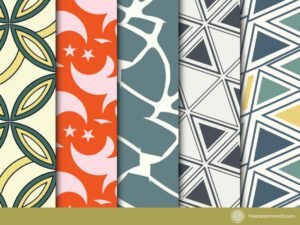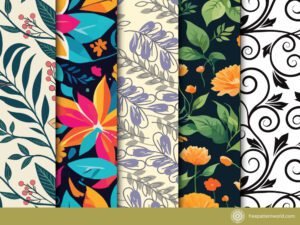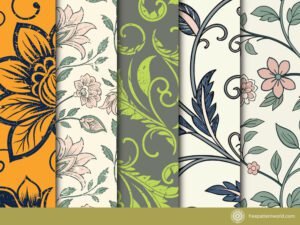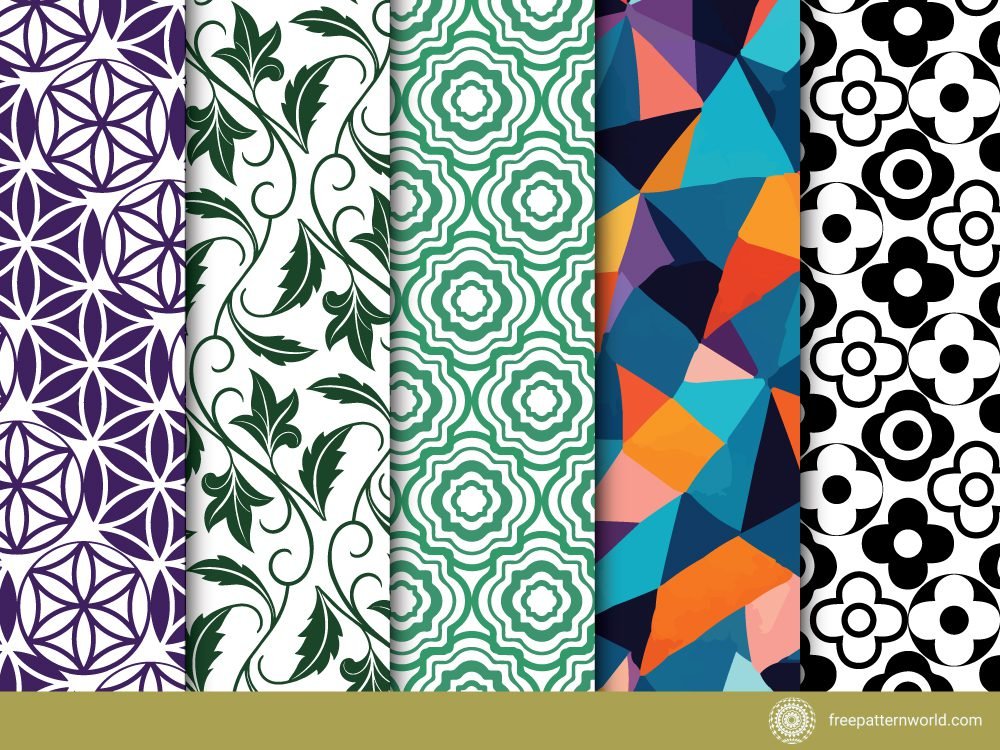
Table of Contents
Discover the top 5 symmetrical pattern designs that have defined visual harmony across cultures and eras. Learn how symmetrical pattern styles enhance design, architecture, and everyday aesthetics.
Introduction
Symmetry is a visual language of balance and harmony that transcends cultural, historical, and artistic boundaries. At the core of this visual appeal lies the symmetrical design pattern—a repeating or mirrored design that brings order and rhythm to a composition. Whether found in ancient temple carvings, modern graphic design, or the spiraling forms of nature, symmetrical design patterns are everywhere.
In this post, we’ll explore the top five symmetrical pattern designs that stand out for their aesthetic value, cultural relevance, and lasting influence. Each of these designs holds a unique place in history and design philosophy, yet all share the central principle of symmetry. Whether you are a designer seeking inspiration, an artist appreciating form, or someone drawn to the elegance of balance, this guide will give you a deeper appreciation of symmetrical design pattern artistry.
What Is a Symmetrical Pattern?
Definition of Symmetry in Design
A symmetrical design pattern is a design where elements are mirrored or evenly repeated around an axis—horizontal, vertical, radial, or even rotational. This arrangement creates visual balance and makes a design feel stable and pleasing.
Types of Symmetry
- Reflective symmetry (mirror symmetry): One half is a mirror image of the other.
- Rotational symmetry: Design repeats as it rotates around a central point.
- Translational symmetry: A motif repeats in a straight line or grid.
- Glide reflection symmetry: Combines reflection with a directional shift.
Symmetrical patterns are used in everything from architecture and fashion to graphic design and textiles.
1. Mandala Pattern Design
A Symbol of Spiritual Symmetry
Mandalas are one of the most visually recognized forms of radial symmetry. With origins in Hinduism and Buddhism, the mandala symbolizes the universe and spiritual wholeness. Designed in concentric layers, mandalas radiate from a central point outward in perfectly mirrored forms.
Pattern Characteristics
- Radial symmetry with balanced repetition
- Circular base with petals, stars, and sacred geometry
- Symbolic meanings of unity, harmony, and enlightenment
Applications in Modern Design
Mandala patterns have been adapted for:
- Meditation and yoga visuals
- Tattoo art and personal symbolism
- Home décor (wall art, tapestries, cushions)
- Graphic design in health and wellness branding
Why It’s a Top Symmetrical Pattern
Its perfectly balanced structure not only creates visual intrigue but also encourages mindfulness, peace, and emotional alignment. Mandalas are both spiritual tools and powerful design motifs.
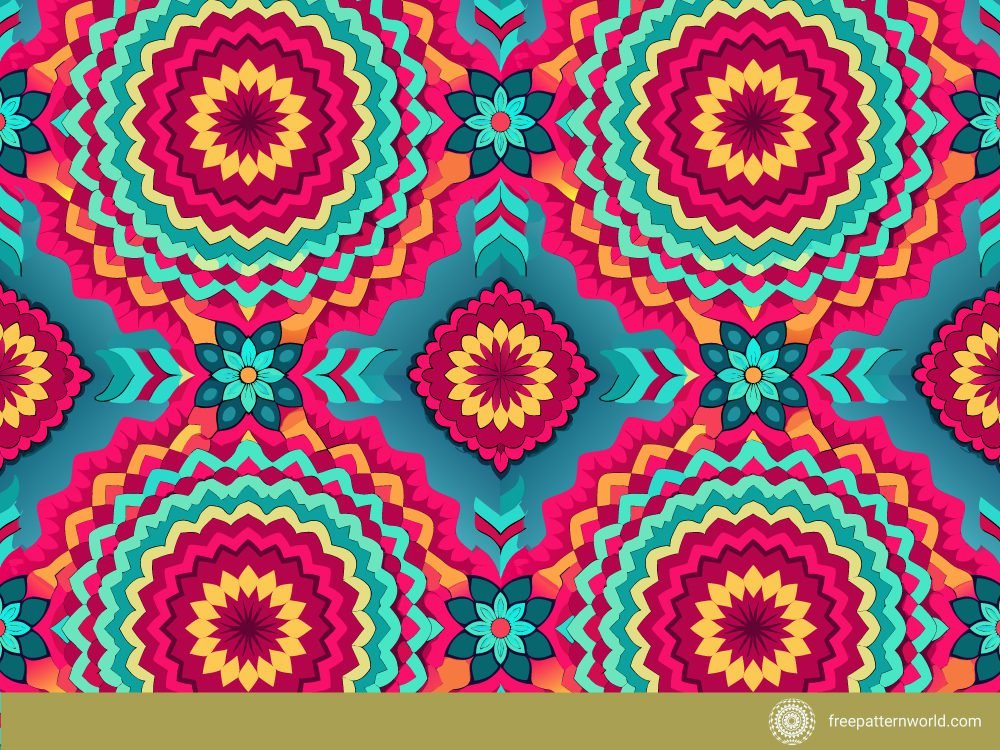
2. Repetition Pattern Design
The Science of Order and Rhythm
Repetition patterns use reflective and translational symmetry to form consistent, rhythmic designs. Whether geometric or organic, repeating motifs offer predictability and harmony that naturally attract the eye.
Pattern Characteristics
- Horizontal or vertical reflection
- Translational symmetry (same shape repeated in a grid)
- Often used in minimalistic or structured compositions
Applications in Modern Design
Repetition patterns are common in:
- Textile design and wallpaper
- Digital interface backgrounds
- Packaging and product labels
- Web and editorial layouts
Why It’s a Top Symmetrical Pattern
The beauty of repetition lies in its simplicity. It creates balance through consistency, making it an essential tool in modern minimalist and user-friendly design environments.

3. Flourish Ornamental Pattern
Classical Elegance in Symmetrical Form
The flourish ornamental pattern is rich in historical charm. Typically made up of symmetrical scrolls, curls, and floral extensions, it represents reflective symmetry rooted in Baroque, Rococo, and Victorian aesthetics.
Pattern Characteristics
- Elegant, flowing curves and leaf-like shapes
- Mirrored or rotational symmetry for visual richness
- Often stylized in metallics or vintage color palettes
Applications in Modern Design
These ornamental patterns are widely used in:
- Invitations and stationery
- Packaging for luxury goods
- Home decor trims and stencils
- Branding for classical or boutique products
Why It’s a Top Symmetrical Pattern
The flourish pattern offers an emotional connection to tradition, sophistication, and timeless beauty. It is ideal for designs where elegance and formality are priorities.
4. Geometric Harmony Pattern Design
Balance through Shape and Precision
Geometric harmony patterns are built using regular shapes such as circles, triangles, squares, and polygons arranged in mathematically precise symmetry. Rooted in principles of sacred geometry and modernism, they bridge structure with creativity.
Pattern Characteristics
- Radial, reflective, and rotational symmetry
- Shapes aligned to golden ratio or grid-based layouts
- Often minimalist but bold in presence
Applications in Modern Design
Common in:
- Web design and modern branding
- Digital product interfaces
- Architectural wall claddings
- Print and apparel design
Why It’s a Top Symmetrical Pattern
Geometric patterns are extremely versatile, scalable, and universally appealing. Their mathematical clarity ensures that designs feel both fresh and structured.

5. Quatrefoil Pattern Design
A Four-Lobed Legacy of Style
The quatrefoil is a symmetrical design pattern formed from four overlapping circles or petals, creating a stylized clover-like shape. Originating in Gothic and Renaissance architecture, it represents harmony, protection, and unity.
Pattern Characteristics
- Fourfold reflective symmetry
- Often stylized with borders or decorative flourishes
- Adapted in both traditional and contemporary styles
Applications in Modern Design
Seen in:
- Decorative tiles and wrought ironwork
- Modern packaging design
- Furniture carvings and fabric patterns
- Fashion accessories and jewelry
Why It’s a Top Symmetrical Pattern
The quatrefoil’s unique blend of classical and modern visual appeal makes it both nostalgic and trendy. It bridges historical elegance with present-day sophistication.
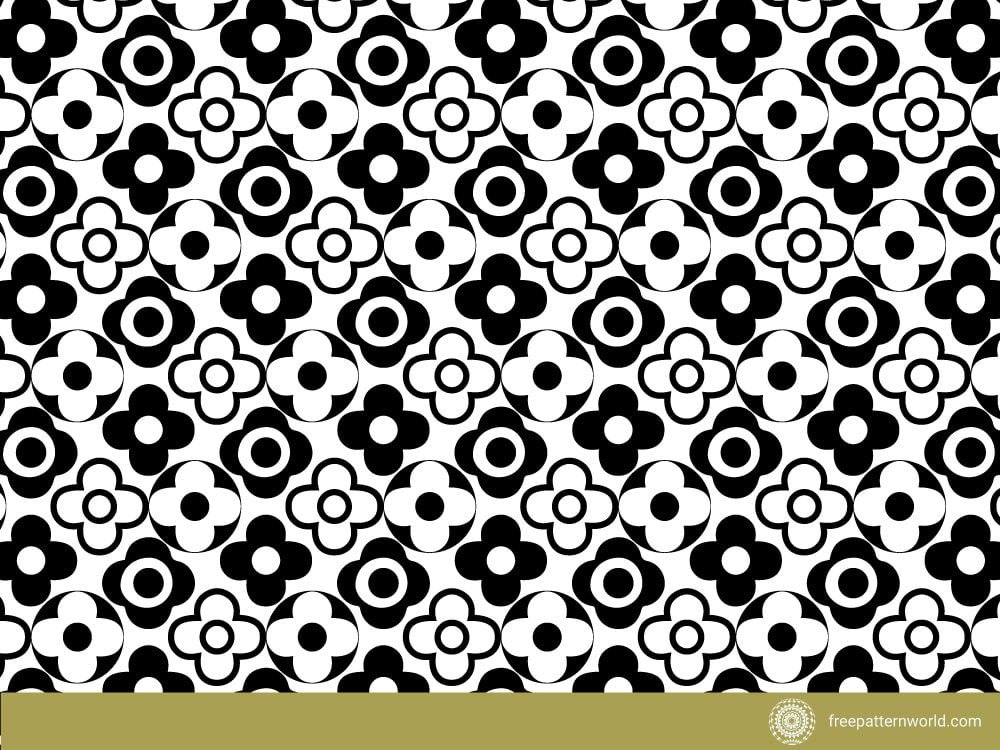
Benefits of Symmetrical Patterns in Design
Psychological Comfort
Symmetrical designs are inherently pleasing to the human brain. They evoke calm, focus, and predictability—qualities that enhance user experience and viewer engagement.
Versatility Across Media
From textiles and ceramics to logos and UI layouts, symmetrical patterns adapt well to different materials, sizes, and formats.
Cultural Connection
Many symmetrical design patterns carry deep cultural, spiritual, or historical meanings, allowing designers to build narratives and emotional resonance.
Easy Repetition and Scaling
The mathematical consistency of symmetrical design patterns ensures they scale seamlessly and repeat effortlessly in large designs like wallpapers or murals.
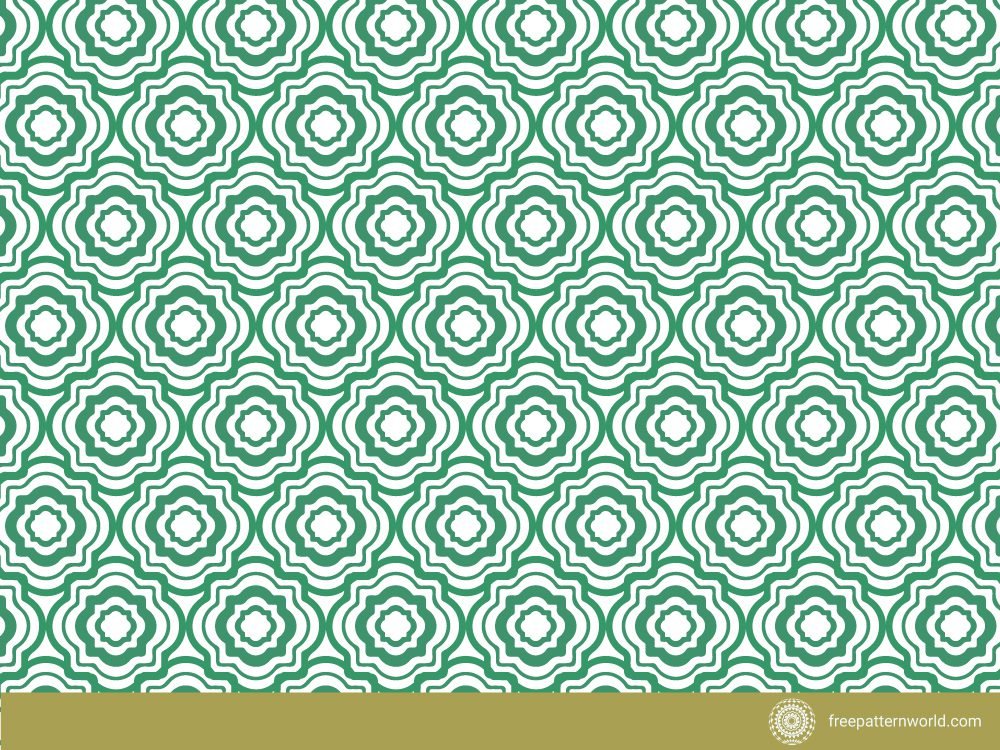
How to Use Symmetrical Pattern Designs Effectively
Use Grids and Guides
When creating or applying symmetrical design patterns, work within a grid system to maintain alignment and repetition across your canvas.
Limit Color Disruption
Stick to a unified color scheme to allow the symmetry to speak for itself. Too many colors can disrupt visual flow.
Combine with Minimalist Elements
Pair symmetrical design patterns with clean typography or solid color blocks to avoid overwhelming your design.
Use Subtle Background Patterns
Light or semi-transparent symmetrical patterns in the background add texture without taking over the visual hierarchy.

Use of Symmetrical Pattern in Art and Design
Graphic Design and Illustration
Designers use symmetrical layouts to create balance, readability, and visual focus in everything from posters to book covers. Symmetry helps build hierarchy and structure in visual storytelling.
Architecture and Interior Design
From the Taj Mahal to classical European palaces, symmetry has long been used to represent order, power, and beauty in architecture. Interior designers use symmetrical furniture layouts to create calm and structured spaces.
Fashion and Textile Design
From Ikat weaving to Scandinavian embroidery, symmetrical design patterns are foundational in traditional and modern clothing. They bring consistency and rhythm to prints and motifs.
Logo and Branding
Logos like those of McDonald’s, Chanel, and Mastercard rely on symmetrical pattern design for recognition, consistency, and aesthetic simplicity. Balanced shapes make brands feel stable and timeless.
Web and UI/UX Design
Symmetrical grids help interface designers organize content and create a seamless user experience. Icons, buttons, and forms are often aligned symmetrically to reduce cognitive load.
Examples of Popular Symmetrical Pattern Designs
Mandala Patterns
Originating in Eastern spiritual traditions, mandalas feature radial symmetry and are used for meditation, decor, and branding.
Quatrefoil Patterns
Used in architecture and fashion, the quatrefoil has four symmetrical lobes and is common in Gothic design and Art Deco motifs.
Geometric Harmony Patterns
These use circles, triangles, and polygons arranged in repeated symmetry to create structured and modern design elements.
Flourish Ornamental Patterns
Often found in Victorian or Rococo art, these symmetrical scrolls and flourishes represent luxury and elegance.
Repetition Grid Patterns
These patterns involve translational symmetry and are used in wallpapers, graphic backgrounds, and textile prints for consistency and rhythm.
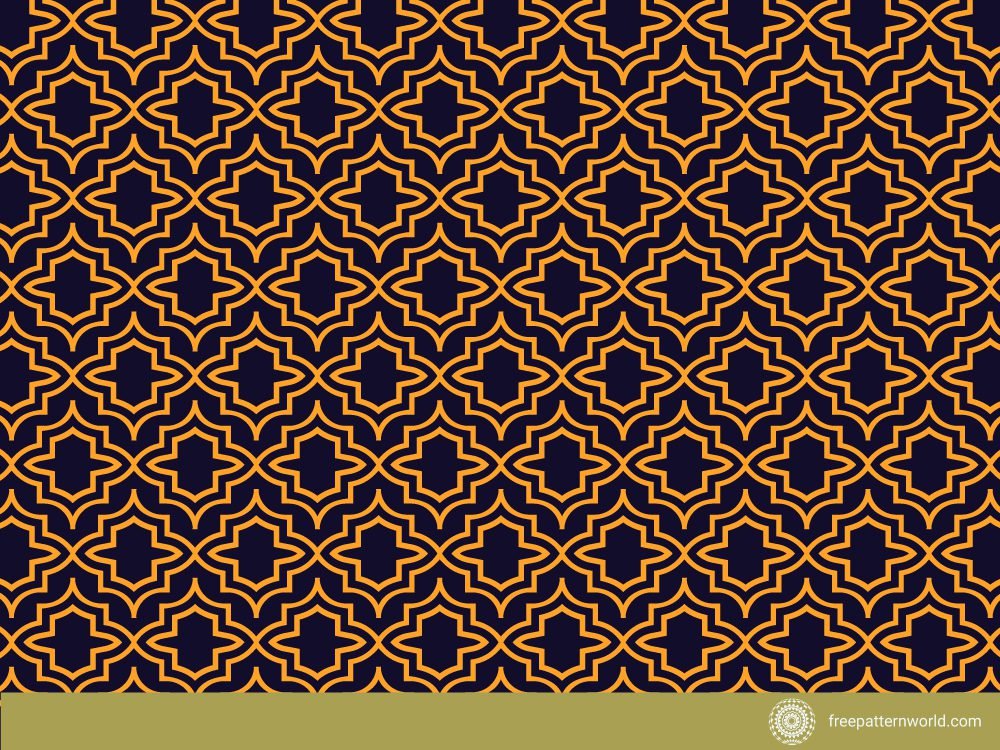
Benefits of Using Symmetrical Patterns
Visual Appeal and Harmony
Symmetry is naturally pleasing to the human brain. Designs with symmetry appear more organized, readable, and balanced, which attracts and retains viewers.
Emotional and Psychological Impact
Symmetrical design evokes calmness, predictability, and trust. It helps reduce visual noise and makes the viewer feel at ease.
Efficient Layout and Structure
In print and digital design, symmetrical patterns help organize content, align elements efficiently, and improve flow and usability.
Cultural and Spiritual Depth
Many symmetrical design patterns carry deep symbolic meanings. Using them can lend spiritual or cultural richness to a design project.
Tips for Creating Symmetrical Patterns
Start with a Central Axis or Grid
Use a guide or grid to establish your base symmetry. This helps ensure precise repetition and alignment.
Choose Repeating Motifs
Use shapes or objects that can easily reflect, rotate, or repeat, such as circles, leaves, or triangles.
Balance Negative Space
Don’t overcrowd your design. Ensure that the spacing between elements is also symmetrical for a clean result.
Experiment with Complexity
Start simple and slowly build complexity. Adding layers of symmetry can make your design more engaging.
Use Software Tools
Programs like Adobe Illustrator, Affinity Designer, and Procreate have symmetry tools that allow you to mirror, rotate, and repeat designs automatically.
Modern Uses of Symmetrical Pattern
Digital Backgrounds and Textures
Symmetrical patterns are widely used in websites, mobile apps, and social media visuals as backgrounds that enhance readability without overpowering content.
Product Packaging
Beauty, skincare, and luxury product brands use symmetrical motifs to convey elegance and precision.
Interior Wall Prints and Murals
Symmetrical mandalas, geometric shapes, and floral grids are used as murals or wallpaper to bring harmony into interior spaces.
Augmented Reality and Motion Graphics
Digital artists use symmetry in AR filters, animations, and motion graphics to maintain balance and fluid transitions.
Challenges and Limitations
Overuse Can Feel Static
While symmetry adds balance, too much of it can lead to predictability. Mixing symmetry with asymmetrical highlights can add interest.
Cultural Sensitivity
Some symmetrical patterns, like mandalas or Islamic art, carry spiritual or religious significance. It’s essential to respect these origins and avoid misappropriation.
Technical Precision Required
Symmetrical designs demand precision. Any misalignment can disrupt the entire balance, making careful planning essential.
Conclusion
Symmetry is not just an aesthetic principle—it’s a universal language of balance. The top five symmetrical pattern designs featured here—mandala, repetition, flourish ornamental, geometric harmony, and quatrefoil—each offer a unique expression of visual balance and timeless design.
Whether you’re designing a website, decorating a product, or developing a brand, incorporating symmetrical patterns adds structure, sophistication, and emotional resonance. These patterns are more than motifs—they’re tools for storytelling, cultural preservation, and visual delight.
Explore these patterns. Experiment with symmetry. And let your designs reflect the natural order of beauty.
To download more Click here.
Download more free designs from freepatternword and freepik.
Support Us with Crypto!
If you enjoy our content and want to help keep this site running, you can support us with crypto. Your support is appreciated!
USDT(TRC20): TSW1iyNhUHiGvc2VdQvZqkqgCTGvdrnsY7
Bitcoin: 38ZHQNkrbZKYJhbLeFZiCrQdR3C2ddtAzV
ERC-20: 0xe1BD9D788256905c6efFd38333A3fF1b6DE3ce67
What is a symmetrical pattern?
A symmetrical pattern is a design in which elements are arranged in a balanced and mirrored way, either across a central line, point, or rotation. These patterns are visually pleasing because they reflect harmony and order.
What are the main types of symmetry in design?
The main types include:
Reflective (mirror) symmetry
Rotational symmetry
Translational symmetry
Glide reflection symmetry
Radial symmetry
Each type creates a different form of balance and repetition in visual composition.
Where do symmetrical patterns appear in real life?
Symmetrical patterns appear in nature (flowers, snowflakes, animals), architecture (temples, mosques, cathedrals), fashion (embroidered textiles), and design (logos, wallpapers, packaging, digital UI).
Why are symmetrical patterns important in design?
Symmetrical patterns help create visual harmony, improve user experience, and enhance the structure of layouts. They make designs feel intentional, calm, and trustworthy.
How can I create symmetrical patterns in graphic design software?
Most professional design tools like Adobe Illustrator, Procreate, and Figma offer symmetry tools. You can use grid systems, mirroring functions, and radial guides to build symmetrical compositions.
Are symmetrical patterns culturally significant?
Yes. Many cultures use symmetrical design patterns symbolically—for example, mandalas in Hinduism and Buddhism, Islamic geometric art, or Celtic knots. These patterns often represent balance, eternity, and spiritual unity.
Can I mix symmetrical and asymmetrical elements in a design?
Absolutely. Combining both can create contrast and dynamic tension. Symmetry provides structure, while asymmetry adds surprise and interest when used purposefully.
What’s the difference between symmetrical and geometric patterns?
Symmetrical patterns focus on balance and mirroring, while geometric patterns are based on shapes like circles, squares, and triangles. Geometric patterns can be symmetrical, but not all symmetrical patterns are strictly geometric.
How do symmetrical patterns affect human perception?
Symmetrical patterns are naturally pleasing to the human eye because the brain processes them more easily. They evoke feelings of stability, order, and beauty, which is why they are used so widely in branding, architecture, and art.
What are some famous examples of symmetrical pattern design in architecture?
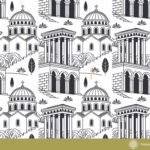
Examples include the Taj Mahal (India), Alhambra Palace (Spain), Notre-Dame Cathedral (France), and various Islamic mosques. These structures use reflective, radial, and geometric symmetry to create spiritual and aesthetic balance.
Are all symmetrical patterns perfectly balanced?
Not necessarily. Some patterns use near-symmetry or approximate symmetry—where elements are mostly mirrored but intentionally altered slightly for artistic or cultural reasons. This adds uniqueness while retaining harmony.
Can symmetrical patterns be dynamic or are they always static?
While symmetry often suggests stillness and order, symmetrical patterns can also be dynamic—especially when using rotational or radial symmetry in motion graphics, animations, or spiraling natural forms.
What’s the difference between bilateral and radial symmetry?
Bilateral symmetry (mirror/reflection) splits a pattern into two equal halves. Radial symmetry expands outward from a central point like a wheel or flower. Both are common but serve different visual purposes.
Are symmetrical patterns better suited for certain industries?
Yes. Industries like luxury fashion, architecture, wellness, religion, and cultural crafts use symmetrical design patterns more frequently due to their association with sophistication, tradition, and visual balance.
Can symmetrical patterns be used in minimalistic design?
Absolutely. Symmetry pairs well with minimalism. Clean, repeating shapes and balanced layouts enhance minimal aesthetics by bringing order without visual clutter.
Where can I download or find symmetrical pattern templates?
You can find free and premium symmetrical pattern templates on platforms like:
FreePatternWorld.com
Vecteezy
Adobe Stock
Creative Market
Envato Elements
These offer patterns in various file types (AI, EPS, PNG, SVG) suitable for print and digital use.

